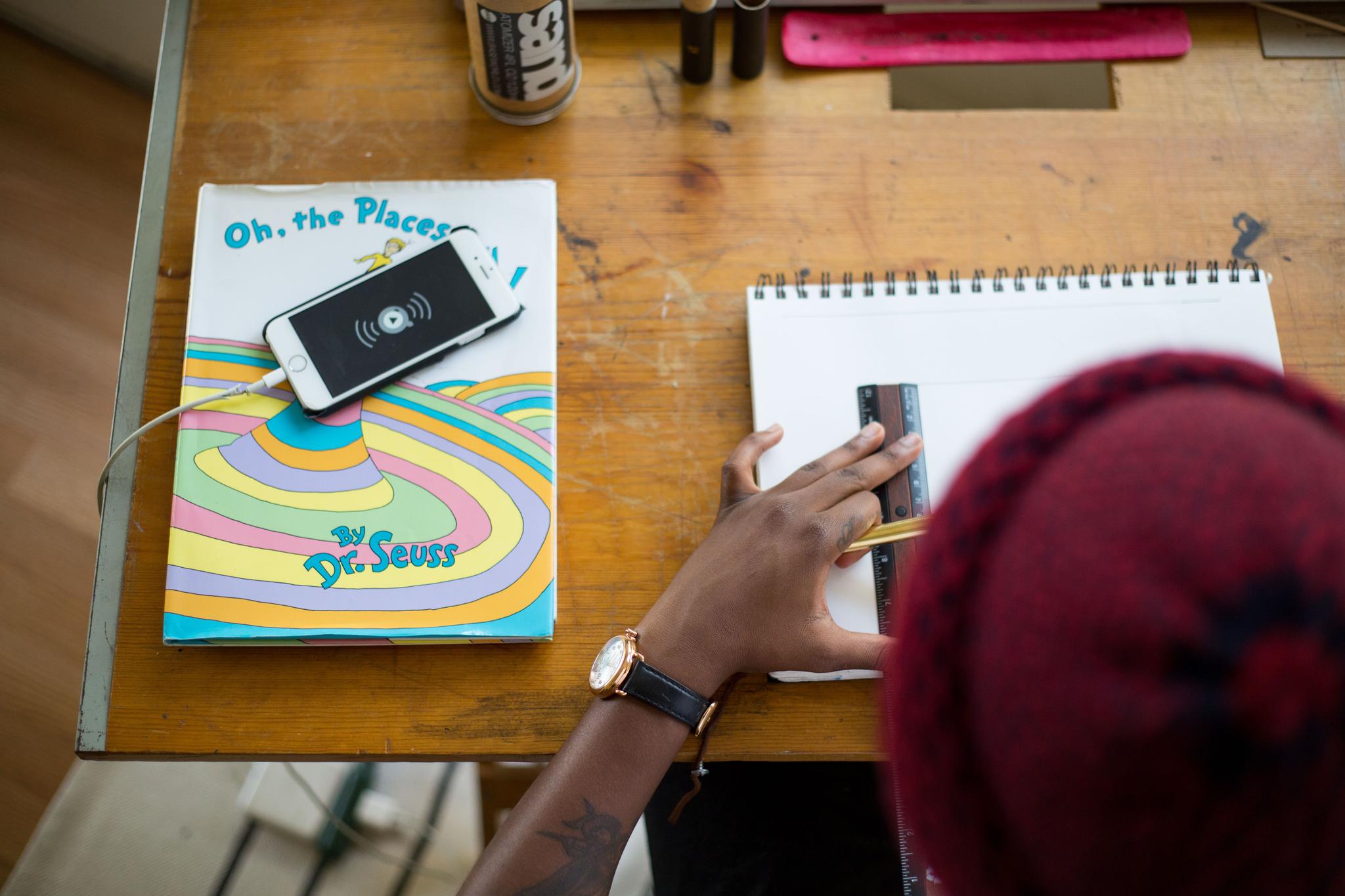Art in COVID-19: How Some Students are Coping (And Thriving) During the Pandemic

Carolyn Murphy, a senior and film production major at the University of Colorado, Boulder, was sitting in her apartment drafting her final film project when she received an email confirming that she had tested positive for COVID-19.
Similar to many students that have been combating COVID-19 since its emergence, Murphy was worried that without hands-on help from professors, equipment from her university, and fearing the worst about what the sickness would bring, that her education was in jeopardy.
But students like Murphy are finding amazing ways to cope, proving that even in the toughest of times, there is always room for resilience and pride in one’s craft.
In many of her classes, Murphy used equipment like video cameras, sound booms, and set lighting. But when COVID-19 hit, these expensive materials became inaccessible.
On top of this stress, because Murphy caught COVID-19 while creating her film, she was concerned with the quality of her work.
Because all of her friends had tested positive for COVID-19 as well, Murphy had an idea.
“I was really worried that my sickness would prevent me from even getting out of bed. I had the worst case out of all my friends…so I knew I needed to ask for help,” she said.
Through help from her friends, Murphy was able to receive support that she never knew was possible.
Murphy, who won a Grillo Award for her film that she filmed, produced, edited, and wrote, all while fighting through the COVID-19 virus, proves that resilience and passion outweigh just about everything.
“Sometimes I think if COVID never happened I wouldn’t have made a film that I’m so proud of. I think, in a way, it made me more open and creative,” Murphy said of her film titled Outlaw Olive, which centers around a young, energetic woman who prides herself on the loyalty of her friends.
For students like Erika Woo, a senior and art & technology major at the University of Oregon, the stress of COVID-19 takes shape at a fundamental level. Because her major is often hands-on, Woo struggles with finding enough resources to be able to function at her highest creative capacity in online courses.
“I’m trying not to let it rob me of my peace and happiness,” Woo stated of the University of Oregon’s handling managing resources due to COVID-19.
Woo explained that art students at the University of Oregon are still paying lab fees which often add up to roughly $150 – and most students don’t even have access to the lab facilities.
In addition to these fees, Woo has bought materials like programming circuit boards and 3D modeling programs with money out-of-pocket, which is a sad truth for many of the students in her program.
Woo feels that although she and so many other students have faced issues due to COVID-19, she still finds peace in doing her work from her own home.
“I’m definitely a night owl,” She stated with a smile on her face, “I think most creatives are. For me, this makes easier to be happy when I’m working at home.”
Woo’s portfolio can be found here.
Although Woo disproves of many steps taken by the University of Oregon, there are some that that she believes should be praised.
Students who have the ability to access the labs must take an online COVID-19 and general safety course in order to access it, which is something that they believe is important in order to keep students safe and healthy, while also providing access to places like woodshops, laser cutters, output rooms, and the design library.
In addition, several members of the University of Oregon architecture program set out to create a mentorship program for students, which has virtually connected them each with their own architecture professional.
Professor Jovencio de la Paz, an assistant art professor at the University of Oregon, noted that the work his students have produced during the COVID-19 outbreak has surpassed his expectations.
“I have seen some of my own students produce some of their best work during this time. I am not surprised by this,” de la Paz said. “Crisis is scary and very challenging, but it can also bring out the best in individuals and communities.”
Ultimately, he said, “Art can be an important step in the process of reflecting on what we are all going through.”
University of Oregon currently has several virtual art exhibits, including A Minute Exhibit by artist Claire Burbridge, who takes inspiration from the beautiful nature of Oregon, as well as a virtual walkthrough of the Jordan Schnitzer Museum of Art, which showcases exhibits throughout the museum.

0 Comments Add a Comment?